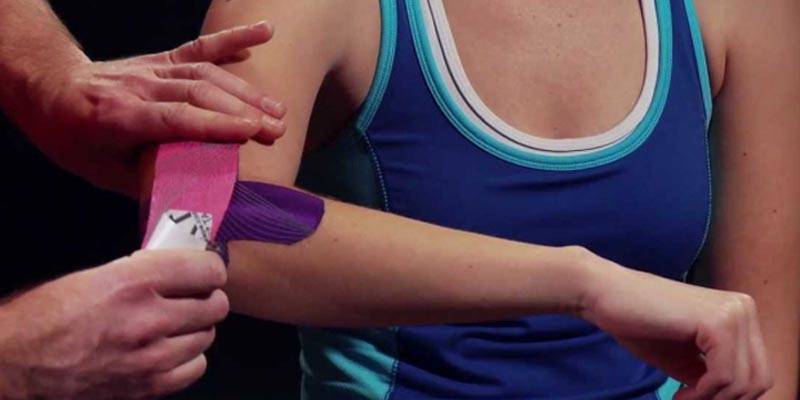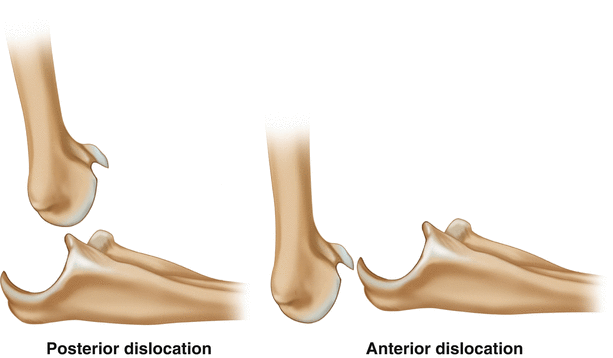nalco group
bone, muscle & joint pain physio
BOOK NOW / WHATSAPP ABOUT YOUR PAIN OR INJURY
- NOVENA 10 Sinaran Drive, Novena Medical Center #10-09, Singapore 307506
- TAMPINES 9 Tampines Grande #01-20 Singapore 528735
- SERANGOON 265 Serangoon Central Drive #04-269 Singapore 550265
Home > Blog > Physiotherapy & Hand Therapy > Conditions > Shoulder Pain / Elbow Pain > Posterolateral Dislocation Elbow Pain Physiotherapy
Posterolateral Dislocation Elbow Pain Physiotherapy

Elbow dislocations are extremely common, and posterolateral dislocations are the most common elbow dislocations, accounting for nearly 80% of all dislocations.
Falling on an outstretched arm is the most common cause of elbow dislocation.
It is characterized by:
- Elbow Pain
- Swelling
- Deformity around the region
Athletes, children, and young adults who lead an active lifestyle are at an increased risk of this injury. Immediate medical attention is necessary to ensure the swelling and inflammation is kept to a minimum until the patient gets to the emergency center, where they will need muscle relaxants and other medication before they get treated.
In this article, we talk about what posterolateral dislocation is, how to identify it, who is at risk, and possible treatments for long-term recovery.
What is Posterolateral Dislocation?
Posterolateral dislocation is a kind of elbow dislocation as defined by the position/direction of the olecranon relative to the humerus. The olecranon is the bony part of the joint of the elbow, and the humerus is the bone that extends vertically into the upper arm.
If you fall on an outstretched arm and your olecranon dislocates from the humerus laterally. The fracture can either be complex or simple, depending upon the extent of the damage. If the bone or radial head has a fracture besides being dislocated, the case is complex.
If it is a simple dislocation with limited injury to the ligamentous or capsular structures, it is a simple case.

If left untreated for long, a posterolateral dislocation can turn into a terrible triad injury by developing radial head and in the coronal tip. Radial head fractures are pretty common.
In fact, almost 10% of elbow dislocations have radial head fractures.
What Causes Posterolateral Dislocation?
As mentioned earlier, falling on an outstretched hand is the most common cause of posterolateral dislocation. As you fall, you place all your body weight on hand.
The pressure from the fall and the weight of the body place an axial load on the elbow.
The forearm also twists a little, placing a higher amount of pressure on the outer edges of the elbow joint, which eventually causes the lateral dislocation of the elbow joint.
Forearm supination, stress on the valgus, forearm flexion, and overtraining at the gym can also result in posterolateral dislocation.
Symptoms of Posterolateral dislocation
Pain and swelling are the two main symptoms of elbow dislocation of types. You may also experience instability in the joint, followed by popping sounds and weakness. The patient will be unable to extend the elbow joint and will experience a very limited range of motion.
The doctor may even look at the skin and examine the wrist and shoulder function to gain a better understanding of the extent of damage to the arm. You may even be able to notice the olecranon jut out a little more than usual. The doctor will request for X-rays and CT scans showing both AP and lateral views even if an onsite medical attendant has performed reduction to put the joint back in place.
Who is at Risk of Posterolateral Dislocation?

- Children and young adults between the ages of 10 and 20 are more at risk of elbow dislocation. They tend to be more active and athletic and are at a higher risk of falling on their extended arm.
- All athletes, including football players, soccer players, volleyball players, basketball players, etc. are at a higher risk because of the nature of their occupation.
- Heavy-duty laborers and workers, especially construction workers who work on heightened structures and are at risk of falling, can also dislocate their elbow. Those who need to use hammers are also at risk of posterolateral elbow dislocation.
- Weight lifters also place a substantial amount of weight on an extended arm and are at risk of supination, which can lead to posterolateral elbow dislocation.
- Boxers, too, are at risk, especially if their blow is met with an equally resistive force placing an axial load on the elbow. They are also at higher risk of supination, which again increases the risk of elbow dislocation.
- Adults or aged individuals with limited mobility are at a higher risk of falling. They also have weaker bones and joints and may end up with a posterolateral dislocation. Seniors should be extra careful as for them, the joint may take longer to heal and may result in long-lasting complications.
Treatment for Posterolateral elbow Dislocation
When the patient comes in with an abnormal appearing elbow with swelling around the sides brought as a result of a traumatic fall, the first guess is always an elbow dislocation. The doctor will, however, conduct a proper diagnosis before giving you proper medication.
The doctor will check for neurovascular injury by palpitating the brachial artery to check for the pulse. Such an injury is uncommon but a possibility, so the doctor will check for it.
The doctor will then check for fractures, if any, and look for the position of the dislocation so they may perform reduction or decide whether you need surgery or not. In case you have the terrible triad, you will have to undergo surgery, as exerting an external force on the broken bone can be dangerous.
If the case is simple, the doctor will give you muscle relaxants before fixing the alignment of your elbow joint. They do so by applying external pressure to the olecranon to almost push it in place. Once complete, the doctor will use X-rays to check whether the elbow joint is connected together as it should be or not.
If found satisfactory, the doctor will prescribe for our hand therapists to fabricate a customized thermoplastic elbow splint and ask you to keep it immobile to allow it to heal. You will be asked to come back for a follow up within 3 to 4 days or maybe even three to four weeks, depending upon tissue damage. Where the immobilization allows the joint to heal, it can also affect the joint’s range of motion and leave it feeling stiff.
In order to prevent that, your doctor will recommend you get physiotherapy to help the elbow joint heal optimally.
how our hand therapists and physiotherapists can help with posterolateral elbow dislocations
Physiotherapy treatment will be broken into different parts and may extend for up to 12 weeks before allowing the patient to revert back to daily routine tension free. The first phase is testing the waters and involves staring out with small range of motion exercises to assess the extent of the damage.
Our therapist will also conduct strengthening exercises at the same time to keep the joint moving while healing.
Range of Motion Exercises
Initially, you will only do shoulder and wrist ROM exercises while keeping the elbow immobile to ensure the whole arm doesn’t stiffen up. They will include rotations and stretching exercises and preserve the natural arc of motion of the joint being exercised.
Strengthening Exercises
Strengthening exercises work the muscles and the tendons to strengthen them. They include ball squeezes, pull-ups, supinations with a dumbbell, and rope climbing.
Here the focus will be on isolating the movements to your elbow; thus, the majority of the movements are minimal and may require you to rest your forearm on a surface and let your wrist hang, as is the case with supination.
As you hold the dumbbell and move your wrist to the left and the right while keeping the forearm on the surface, you work your joint and the forearm to work out the stiffness post immobilization.
AROM and PROM
Assisted range of motion exercises and passive range of motion exercised for the elbow include flexion and extension of the elbow.
The physiotherapist may recommend that you do simple extensions and flexion exercises when at home or may recommend you use dumbbells to challenge the joint a little more and ensure optimal recovery. However, we recommend you do all weighted exercises under the supervision of your physiotherapist so that you don’t end up harming the healing joint.
Resistance Training
Resistance training comes later and is usually one of the last stages of the rehabilitation process. You can use a resistance band to conduct flexion and extension exercises. Place the band securely under your foot and hold the other end in your hand. Use your body weight to hold the resistance band in place as you extend and flex your elbow joint.
The added resistance requires a little more effort and strengthens the forearm, wrist, and elbow.
Testing Full ROM and Strength
You can conduct these ROM and strength exercises even after your elbow recovers completely. As long as you have a two-pound dumbbell with you, you can do wrist and elbow flexion and extension exercises.
You can also do supination exercises to build a little more arm muscles.
We suggest you keep working out and exercising to keep all the joints in good condition, especially the one that’s healing. Posterolateral dislocations are common, but they do require a substantial amount of time to heal.
Make sure you opt for physiotherapy management and healing to ensure the joint doesn’t give you problems later on in life.
